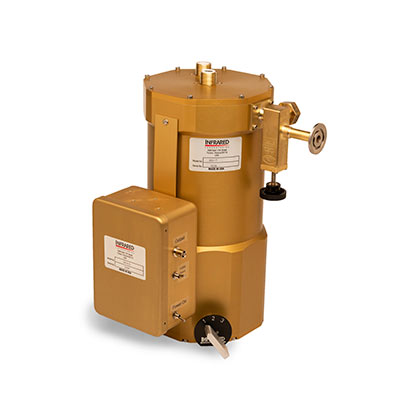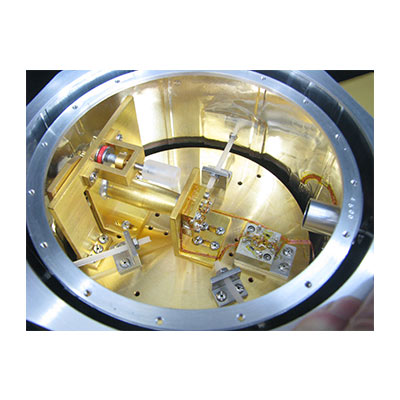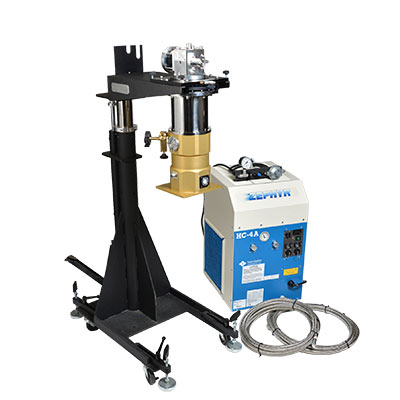IRLabs is the global leader in highly sensitive and cost-effective cryogen-free and cryogenic bolometers and IR detectors for general research, high resolution and far-IR detection, and OEM applications.
Find the Bolometer or Photoconductor for Your Spectral Range

Why Choose Bolometers from IRLabs?
We have supplied cooled IR bolometers and IR detectors to leading scientific organizations since 1967. We offer a full range of composite, silicon, hot electron, and germanium bolometers and photodetectors used for FTIR spectroscopy, high magnetic field research, terahertz research, molecular beam physics, and IR astronomy.
Highly sensitive: Our proven experience in cryogenics, electronics and optics sets the benchmark in sensitivity
Cost effective: Standard bolometers reduce project costs
Cryogen-free options: Eliminates needs for scarce and expensive liquid helium
Wide spectral range: Complete coverage of the IR spectral range
Customized configurations: Can be configured to meet specific application requirements including increased work height, dual detectors, filter positions and coupling optics
Bolometer & IR Detector Comparison
| Bolometers | Spectral Response (µm) | Operating Temp (K) | Electrical Sensitivity (S[V/W]) | Noise Equivalent Power [W/Hz(1/2)] | Noise Vn[nV/Hz(1/2)] | Frequency Response (Optimum Chopping Frequency) | Liquid Cryogen Cooling | Cryogen-free Cooling |
|---|---|---|---|---|---|---|---|---|
| General Purpose 4.2 K Bolometer System | 15 – 2000 | operation to 4.2 | ~ 2.4 X 105 | ~ 2.5 X 10-13 | ≤ 80 at 80Hz | < 500 Hz | ||
| Hi Res 4.2K Bolometer System | 15 – 500 | operation to 4.2 | ~ 6.1 X 105 | ~ 6.5 X 10-14 | ≤ 40 at 80Hz | < 200 Hz | ||
| Standard 1.6 K Bolometer System | 15 – 2000 | 1.6 | ~ 7.5 X 105 | ~ 4.6 X 10-14 | ≤ 40 at 80Hz | > 1 KHz | ||
| Far-IR 1.6 K Bolometer System | 300 – 5000 | 1.6 | ~ 1.0 X 107 | ~ 2.0 X 10-14 | ≤ 50 at 80Hz | < 300 Hz | ||
InSb Hot e-Bolometer | 0.3mm – 5mm | 4.2 | > 4.0 X 103 | < 8 x 10-13 | < 4.0 at 200Hz | < 600 kHz | ||
| Photoconductors | ||||||||
| Si:B Photoconductor | 5 – 30 | 4.2 | SNR > 2.5 X 105 | < 5.0 X 10-12 | < 20µV/Hz(1/2) at 1kHz | DC to 5kHz | ||
| Ge:Ga Photoconductor | 40-120 | 4.2 | SNR > 2.5 X 105 | < 5.0 X 10-11 | < 10µV/Hz(1/2) at 1kHz | DC to 5kHz |
Selecting Bolometers or Photoconductors
Our broad-bandwidth bolometers and doped photoconductors each offer advantages to best meet your spectral band, frequency response, noise, and budget requirements. We’re happy to discuss your application, requirements, and budget to determine the right fit for your needs.
Selecting Liquid Cryogenic or Cryogen-Free Cooling
All detector types are cooled to cryogenic temperatures to reduce noise and increase sensitivity. Detectors can be cooled using pour-filled liquid cryogen dewars or cryogen-free mechanical refrigeration.



